Habitat: This species inhabits temperate (deciduous) and boreal (coniferous) forests, but they also occur in other diverse habitats such as dry scrub forests of Mexico, bottomland hardwood swamps in the coastal plain of the southeastern U.S., temperate rainforests of Alaska and British Columbia, and treeless Labrador tundra (where they occupy the typical niche of the grizzly bear). In northern México and south Texas they use and cross wide expanses of desert habitats and feed on succulents. At the other extreme, some bears reside in suburban or urban environments.
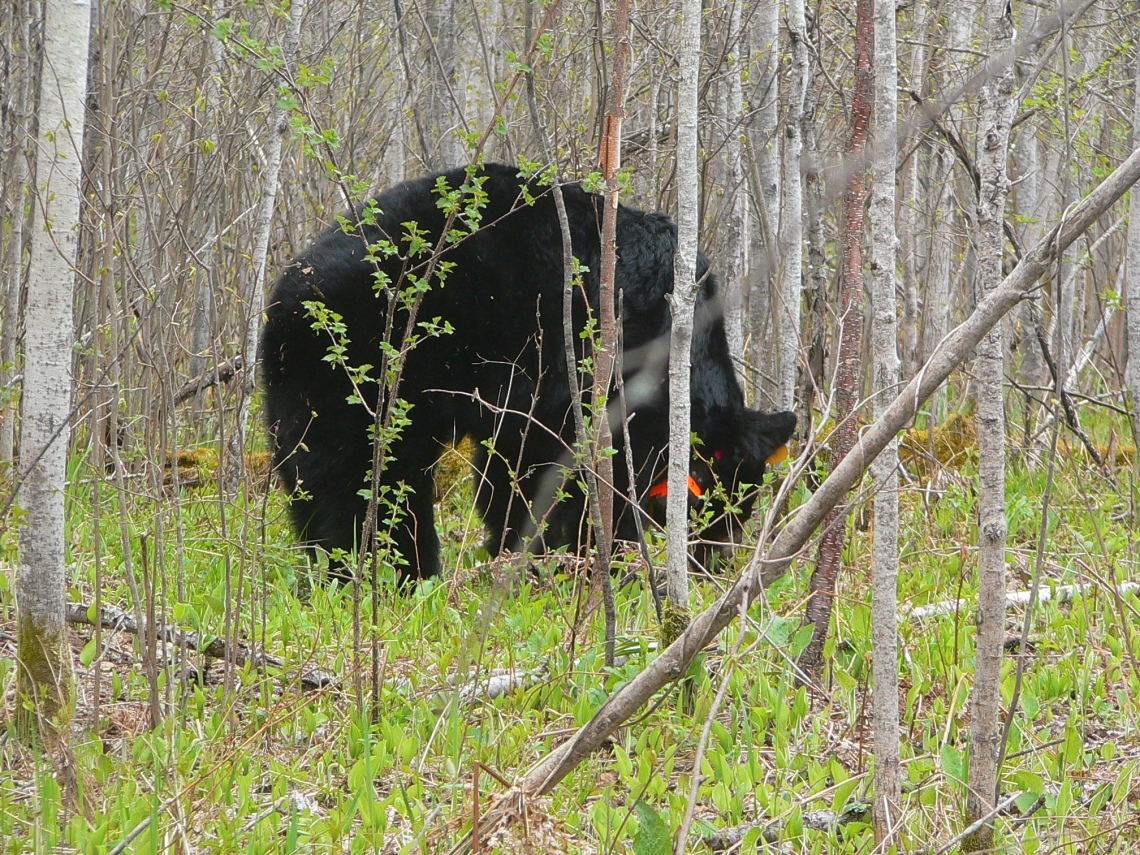
American black bear_U americanus_aspen forest with spring greens_D Garshelis

American black bear_U americanus Minnesota_aspen parkland bear habitat_D Garshelis

American black bear_U americanus Minnesota_northern hardwood forest habitat_D Garshelis

American black bear_U americanus Minnesota_opening in forest_D Garshelis
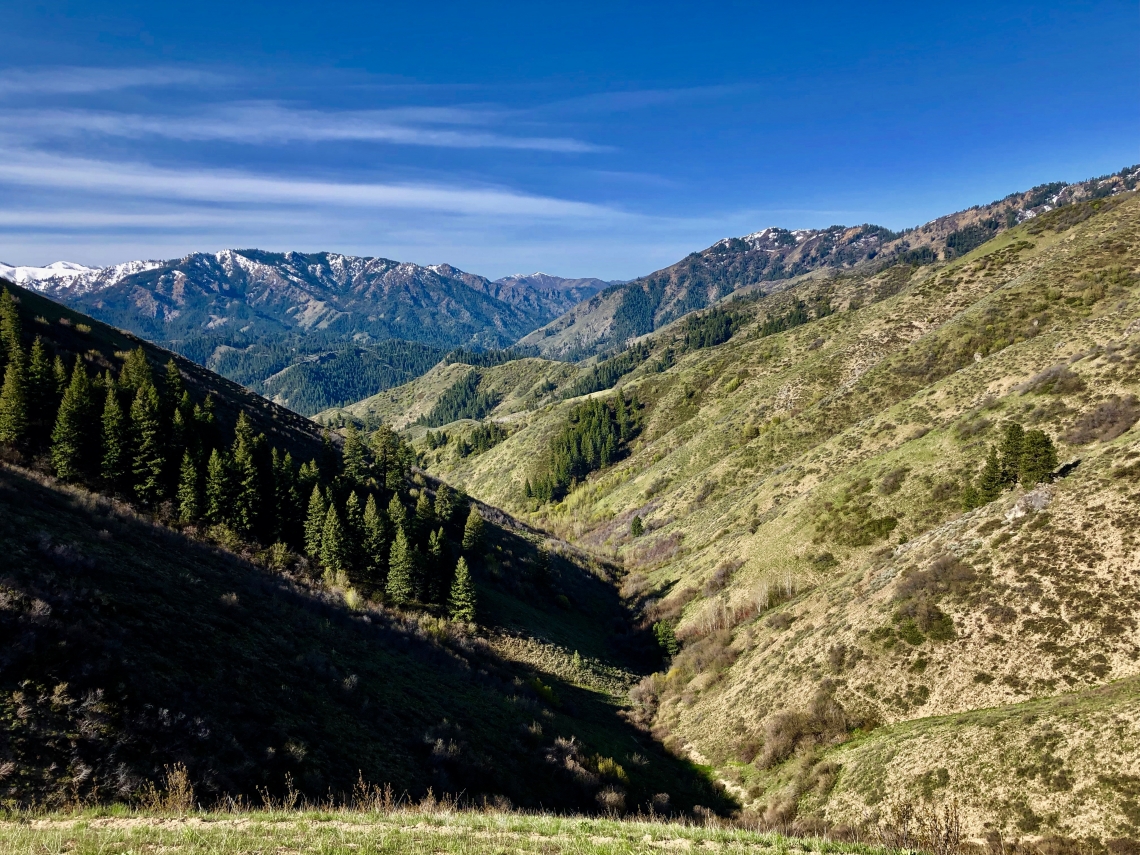
American black bear_U americanus_Idaho_early spring habitat_J Beecham
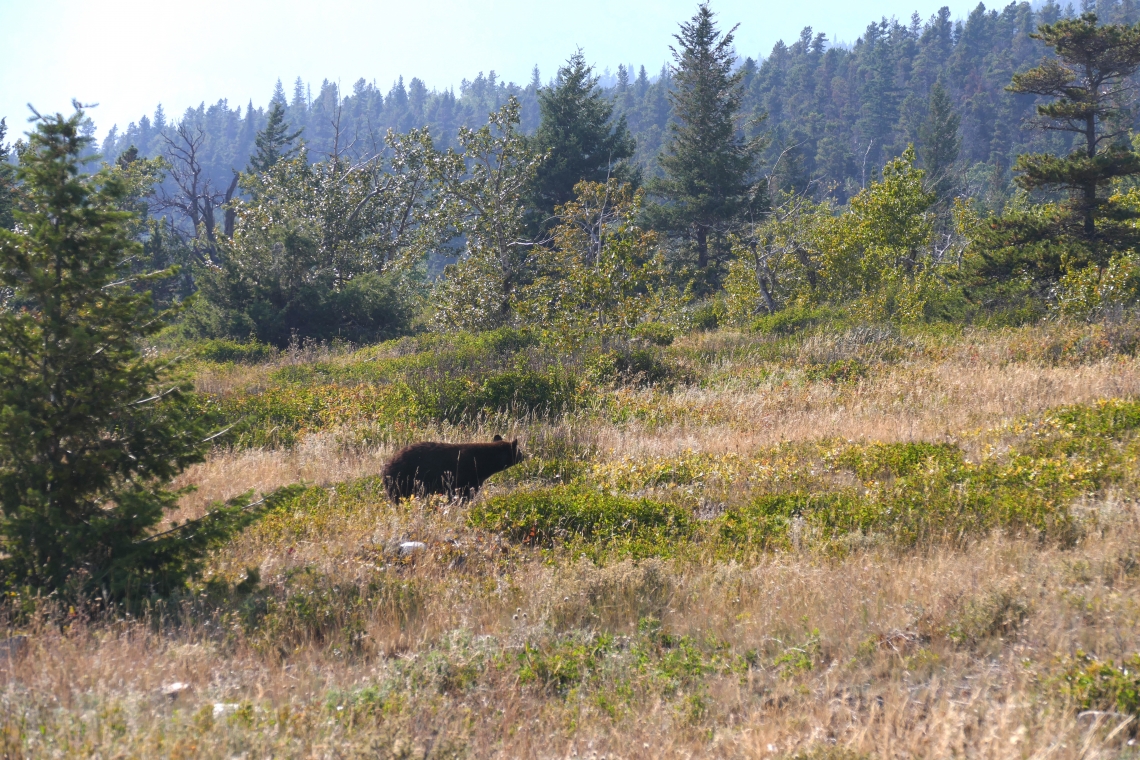
American black bear_U americanus_Glacier NP Montana_feeding on abundant berries in forest opening_D Garshelis
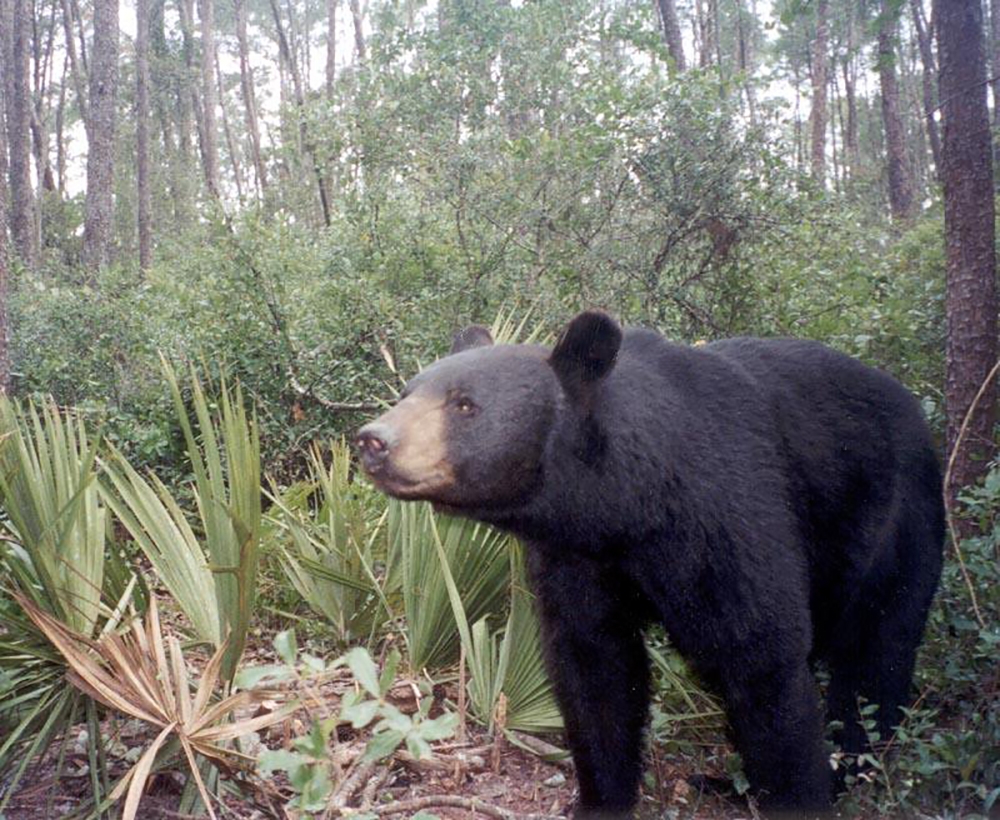
American black bear_U americanus Florida_oak scrub habitat with sand pine and palmetto_Florida Fish and Wildlife Conservation Commission IR camera

American black bear_U americanus_Black Canyon of the Gunnison NP, Colorado, USA_Gambel oak, Pinyon pine, Juniper_D Garshelis

American black bear_U americanus Coahuila Mexico_bear habitat_D Doan-Crider
Diet: This species is a generalist, opportunist omnivore whose diet varies considerably by location and season. Their diet is mostly plant-based, including herbaceous vegetation, roots, buds, succulents such as yucca and cactus fruits, and numerous kinds of shrub or tree-borne fleshy fruits and nuts, as they become ripe. They climb trees to eat buds and nuts such as beechnuts and acorns; while feeding they may break branches toward the trunk, forming a nest on which they sit and rest (similar to Asiatic black bears). However, most feeding is from the ground (fruits on bushes and nuts fallen from trees).
Animal foods include insects (especially ants) in life stages from egg to adult, and vertebrates from fish to mammals. They may kill deer fawns and moose calves shortly after birth, but very rarely kill adult ungulates. When available, they may consume various human-related foods, from garbage and birdseed to a variety of agricultural products, including corn, oats, soybeans, sunflowers, wheat, apples and other tree-borne cultivated fruits, and brood and (to a lesser extent) honey in apiaries. In some localized areas they prey on calves of cattle, especially when cattle are concentrated near watering areas.
American black bears may migrate elevationally, corresponding with ripening of different foods. In non-mountainous areas, during late summer and fall, they may migrate considerable distances (100–200 km) to find more abundant food sources in preparation for hibernation.
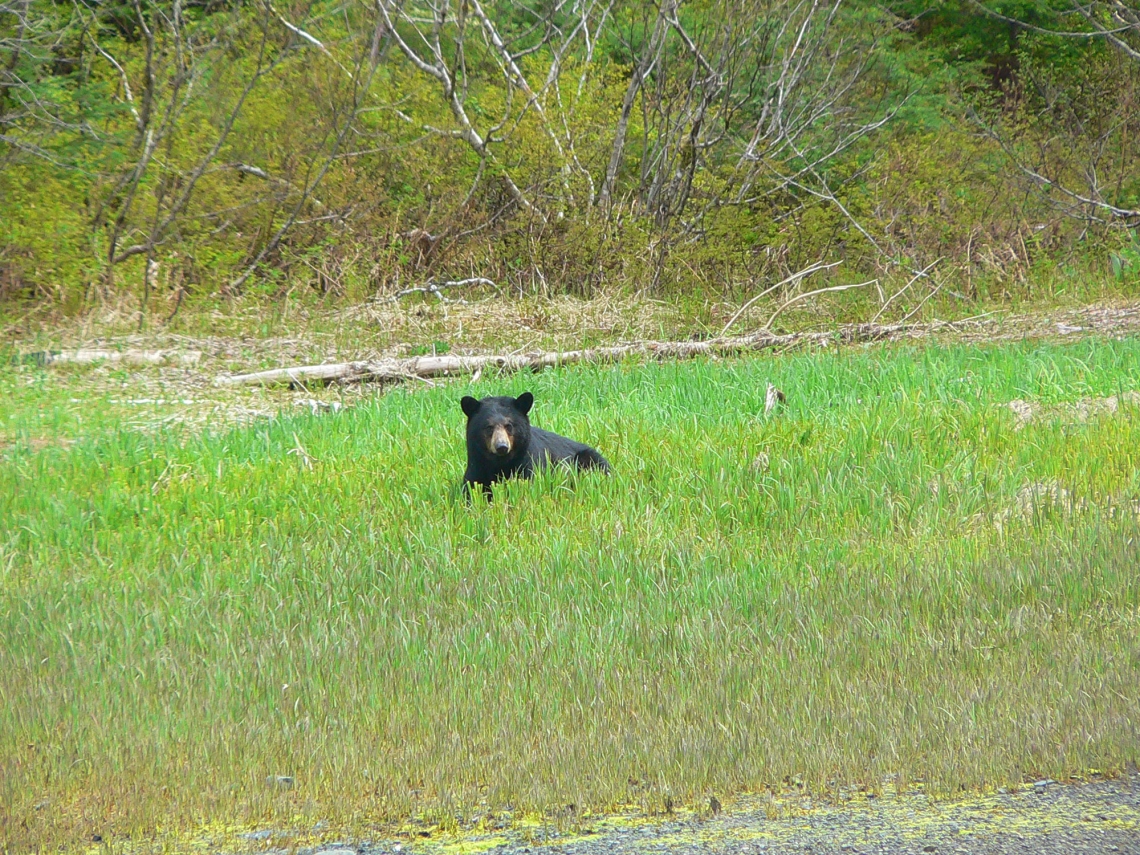
American black bear_U americanus Prince William Sound Alaska_consuming sedge along shoreline_D Garshelis
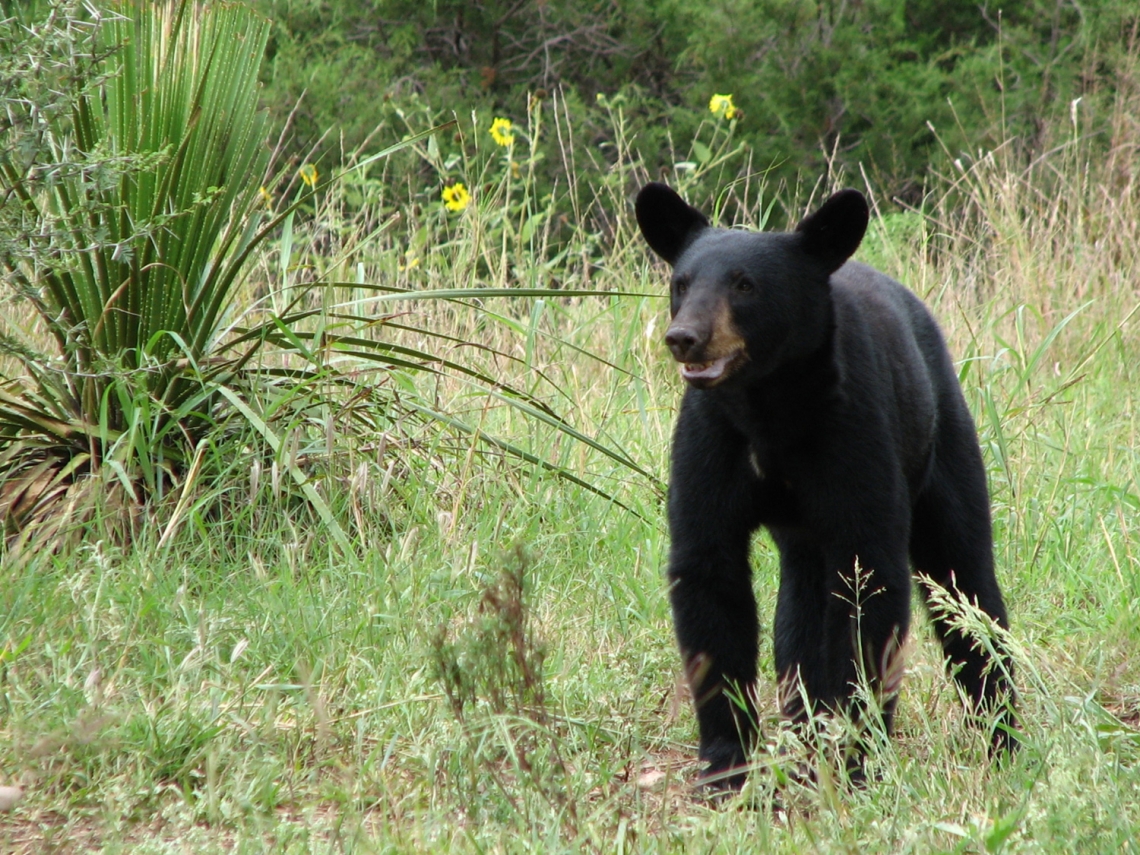
American black bear_U americanus Coahuila Mexico_subadult with succulant bear foods yucca_D Doan-Crider
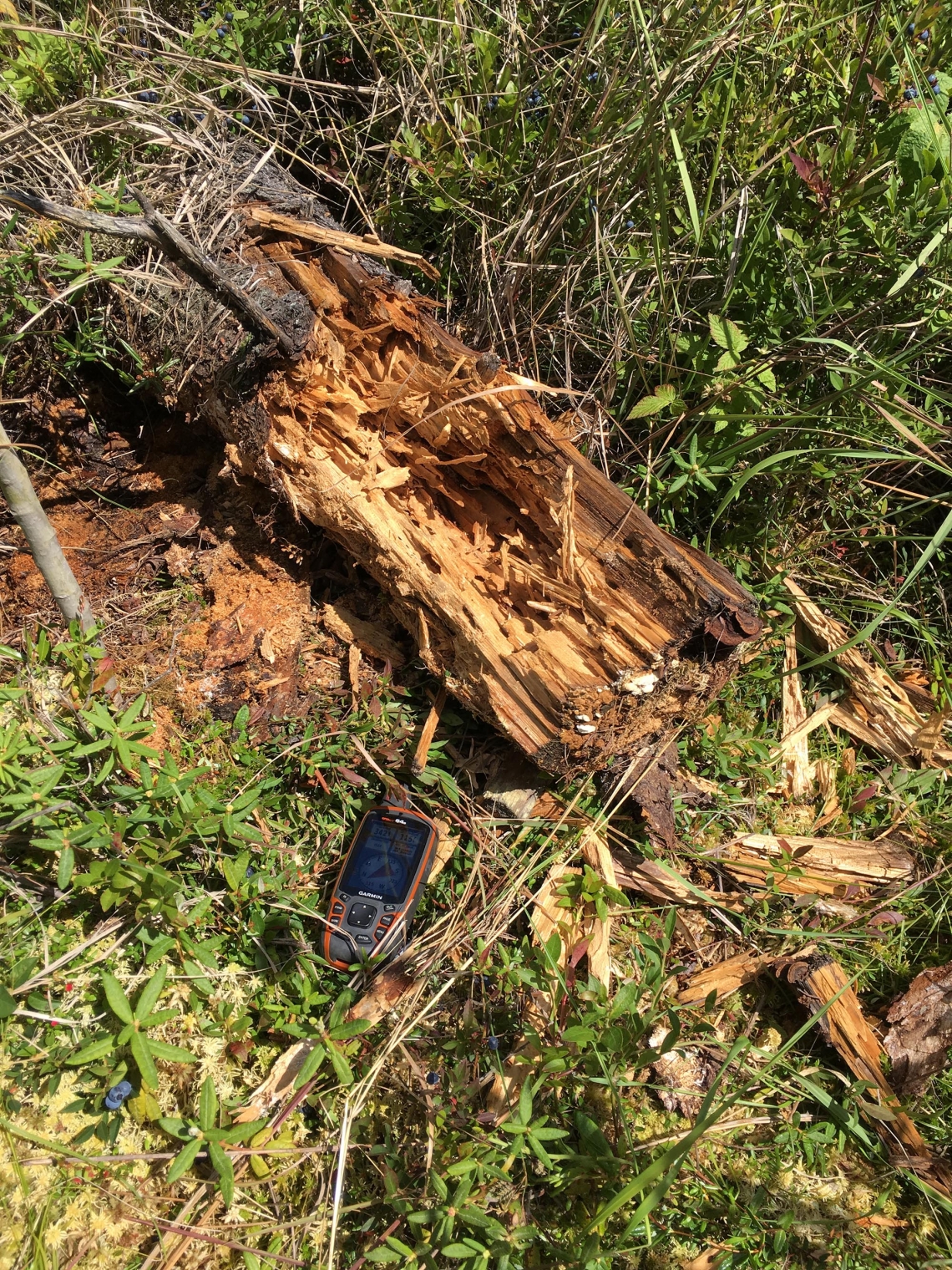
American black bear_U americanus Minnesota_broken log from feeding on ants_D Garshelis
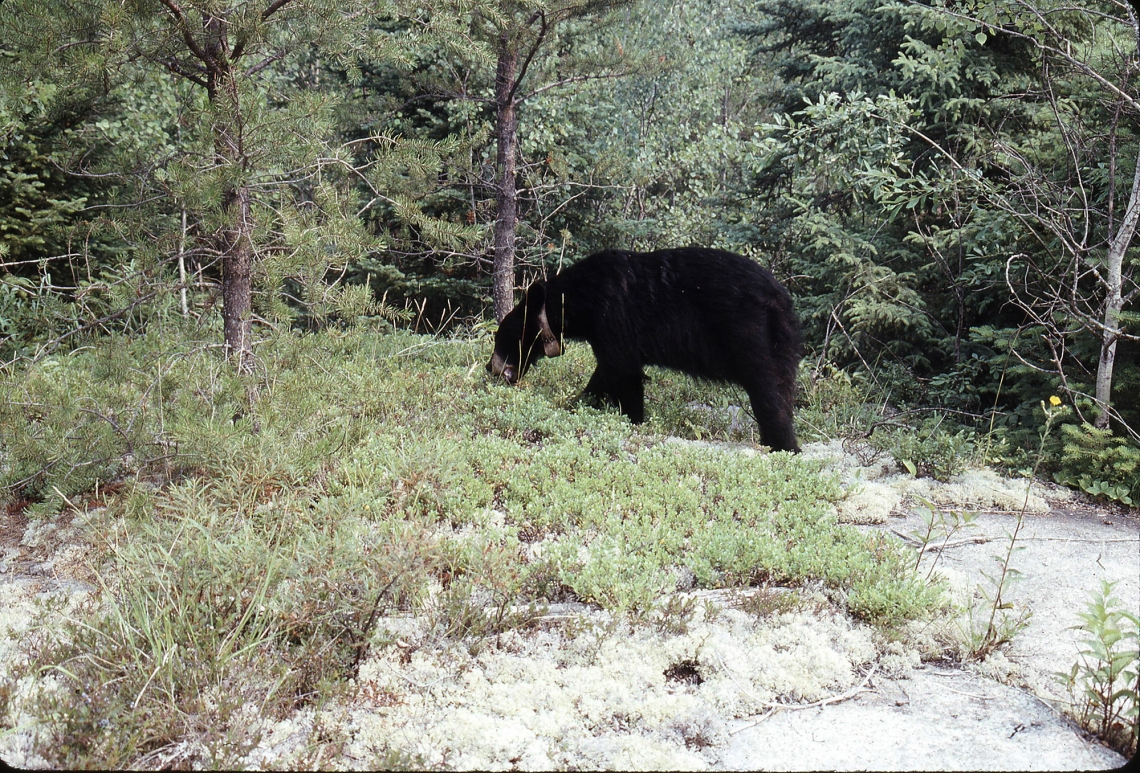
American black bear_U americanus Minnesota_feeding on blueberries_D Garshelis
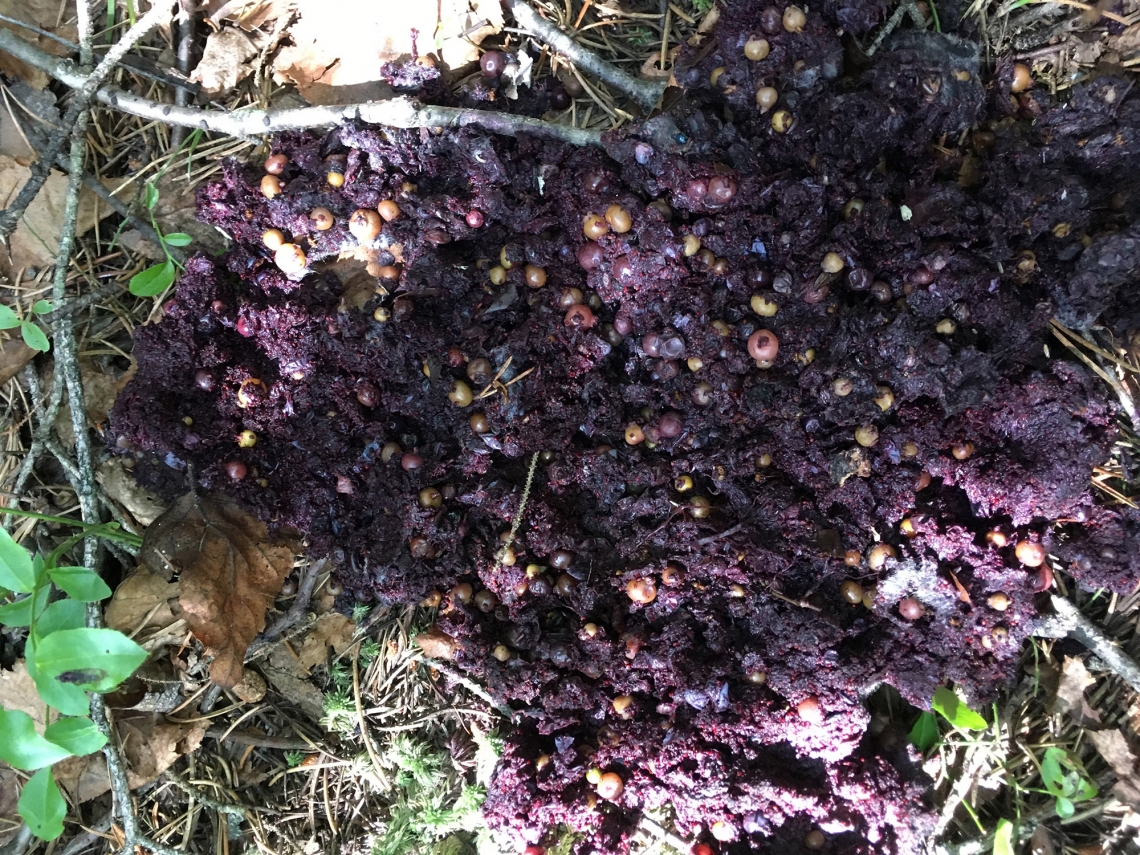
American black bear_U americanus Minnesota_scat with many undigested berries_D Garshelis
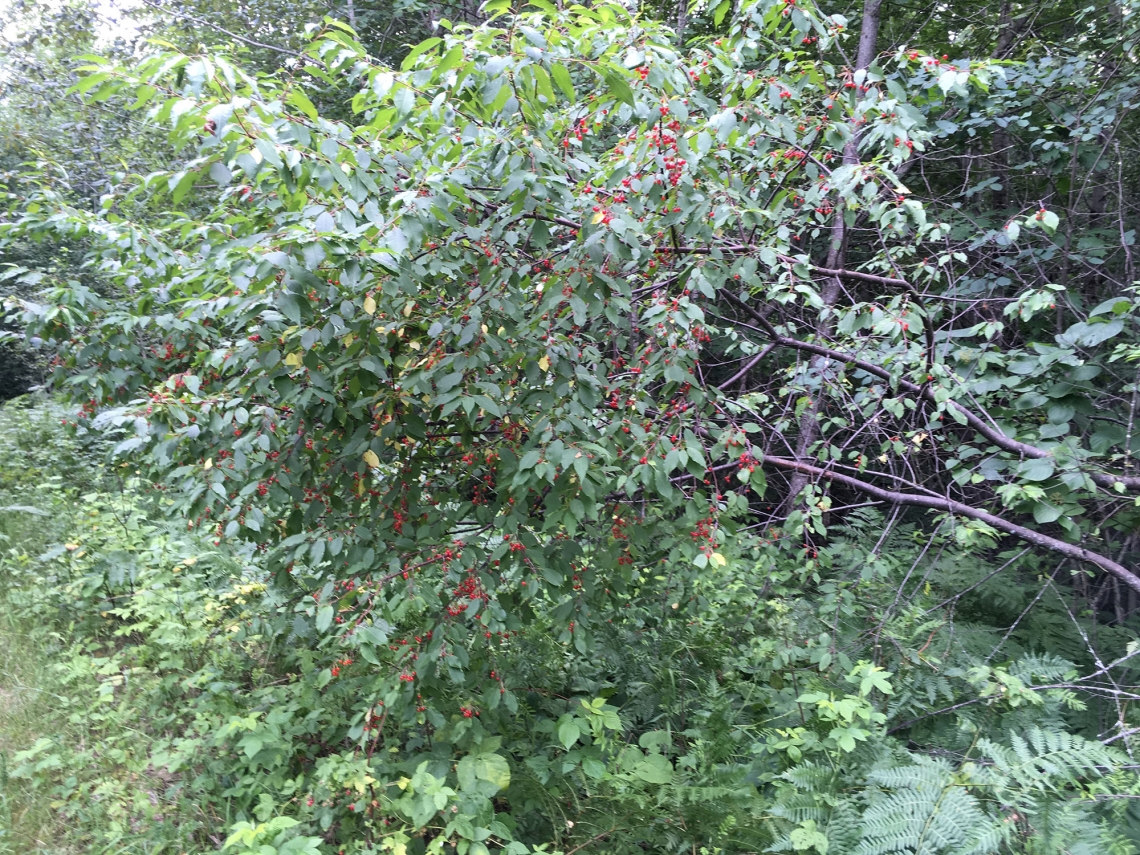
American black bear_U americanus Minnesota_pin cherry tree pulled over by feeding bear_D Garshelis
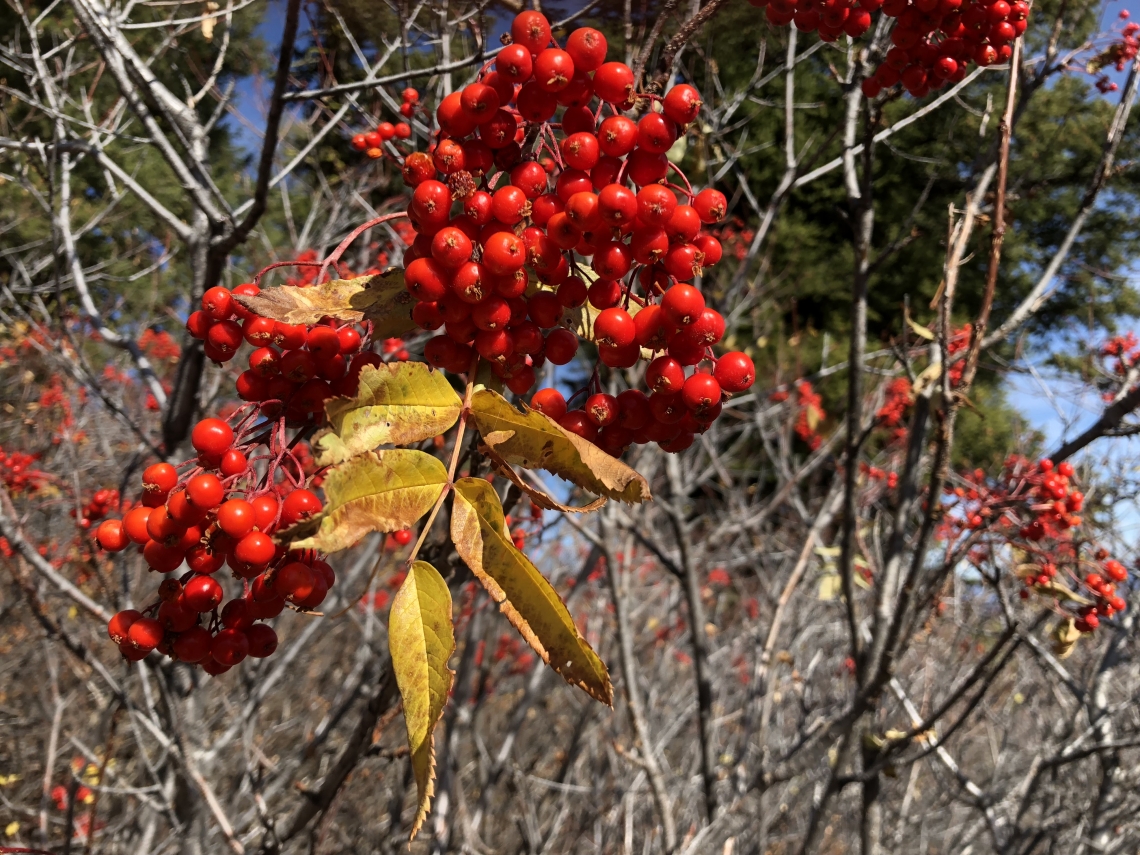
American black bear_U americanus_Idaho_Mountain Ash soft mast_J. Beecham
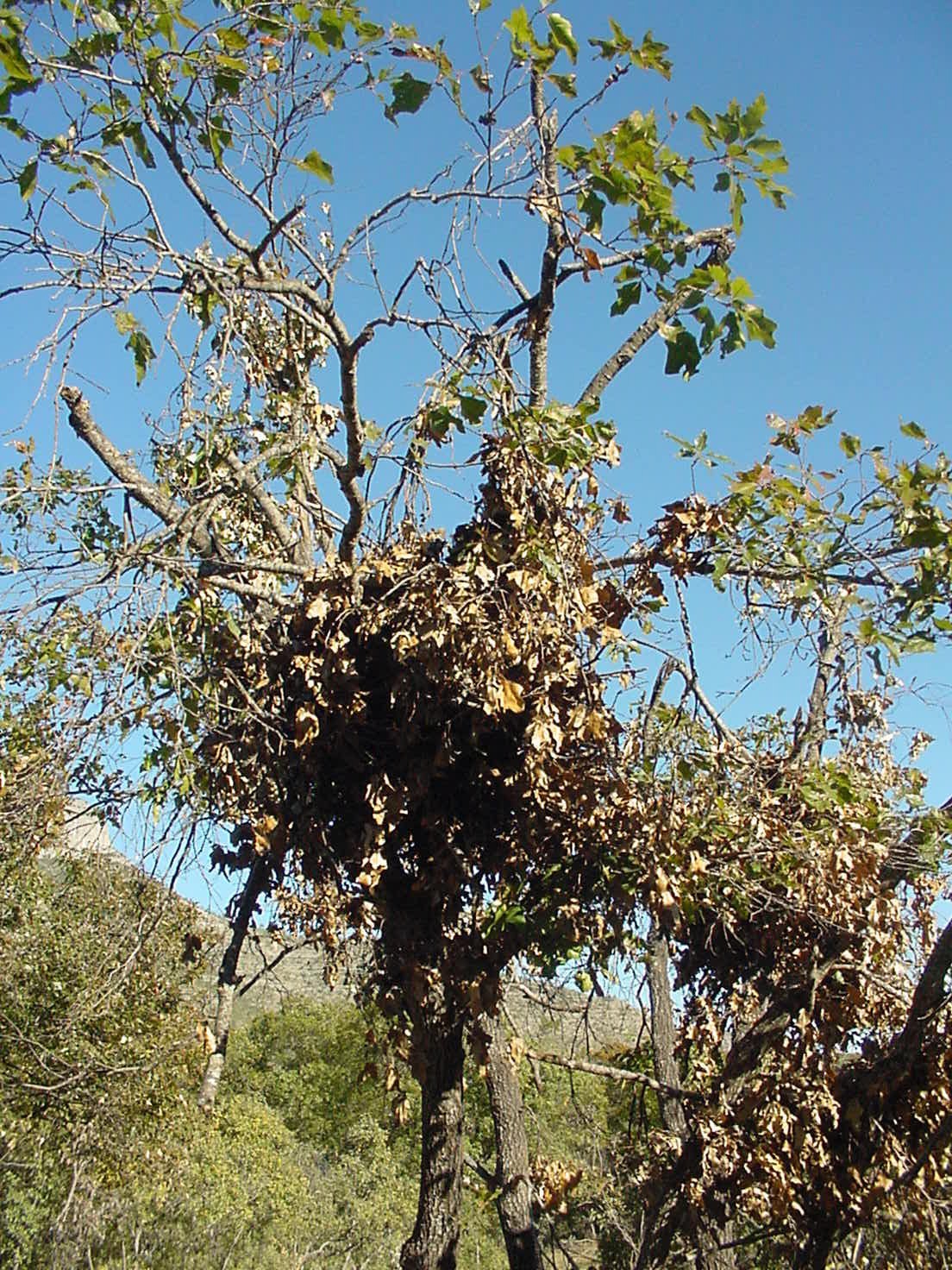
American black bear_U americanus Cohuila Mexico_nest formed by feeding in oak tree_D Doan-Crider
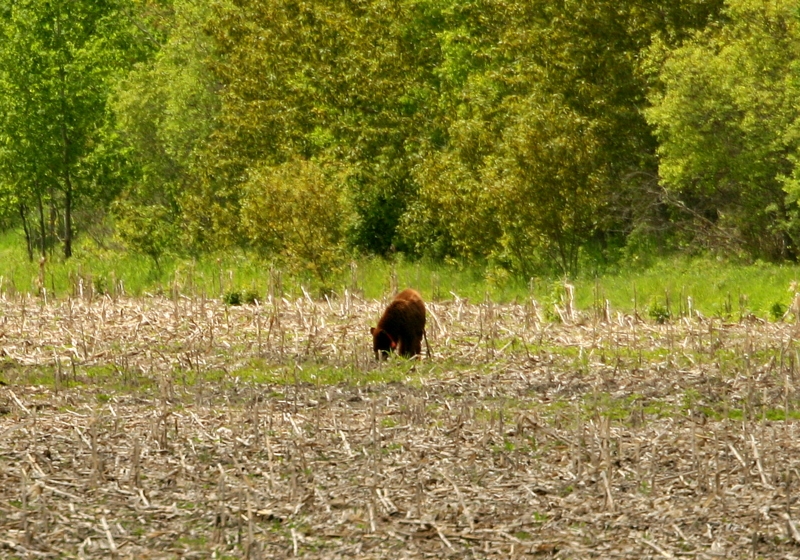
American black bear_U americanus_Minnesota_consuming waste corn after harvest_M Ditmer
Hibernation: American black bears hibernate for up to 7 months in the northern portions of their range, but for considerably shorter periods in more southerly areas. In fall, they eat profusely in preparation for the winter (referred to as hyperphagia), packing on as much fat as possible. Their body temperature drops only a few degrees (from 37°C in summer to 32–34°C in winter), thereby enabling them to be semi-alert to dangers at their den site; nevertheless, they are considered unique true hibernators in that they do not eat or drink, typically do not urinate or defecate, and lose very little bone or muscle mass despite being sedentary all winter. Their heart rate slows from 80–100 beats per minute in summer to about 10–30 per minute in winter. During hibernation their heart pumps a few beats synchronized with their 2–5 breaths per minute, then pauses between breaths. In some southern and low-elevation areas, where food is available year-round, some bears may remain active during winter. However, all pregnant females den to give birth to cubs.
These bears use a wide variety of den structures, depending on location, including natural caves, ground-level or above-ground cavities in hollow trees, underground chambers that they excavate, root masses, brush piles, or above-ground nests that they construct. Even in the coldest environments, some bears den in an open nest, where snow accumulates on their back due to the insulation of their hair and thick layer of fat, and reduced blood flow. Some dens are in remote areas, while others are near human dwellings (e.g., under porches) or roads (e.g., in culverts).
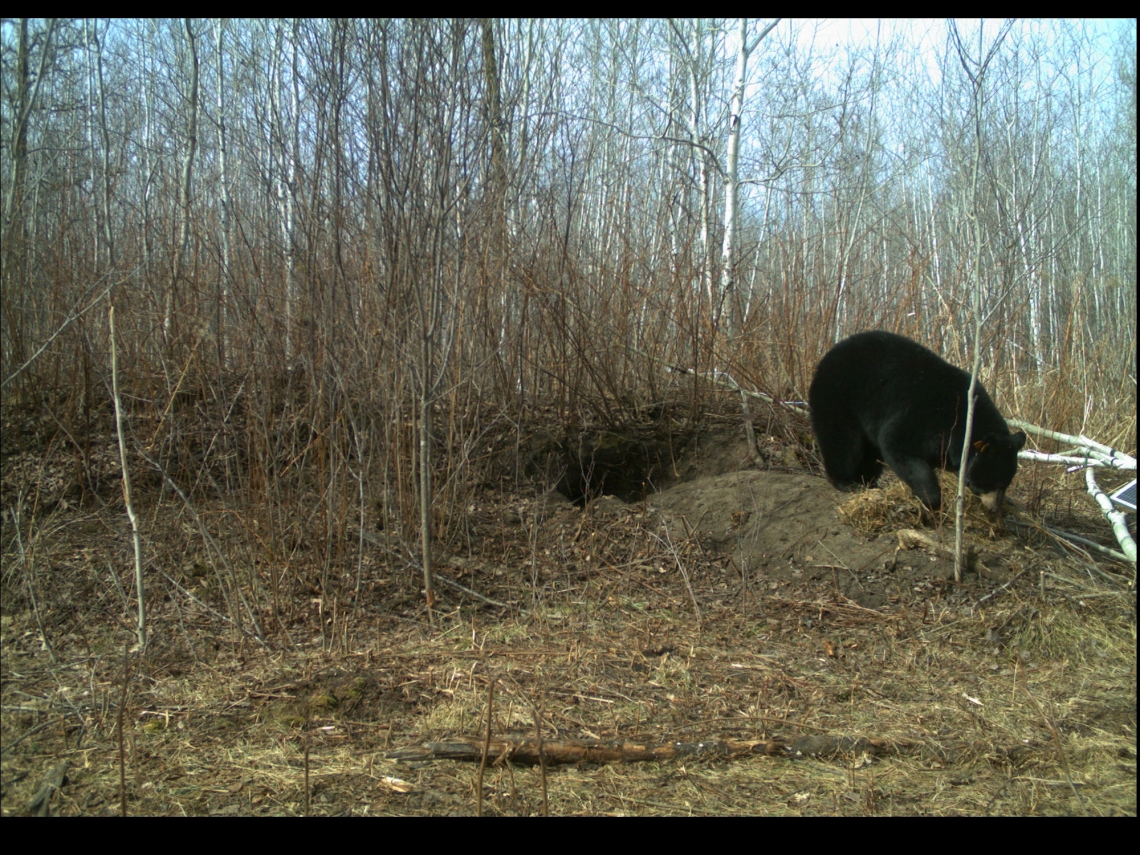
American black bear_U americanus_Minnesota_female raking bedding material into den_Minnesota DNR camera trap
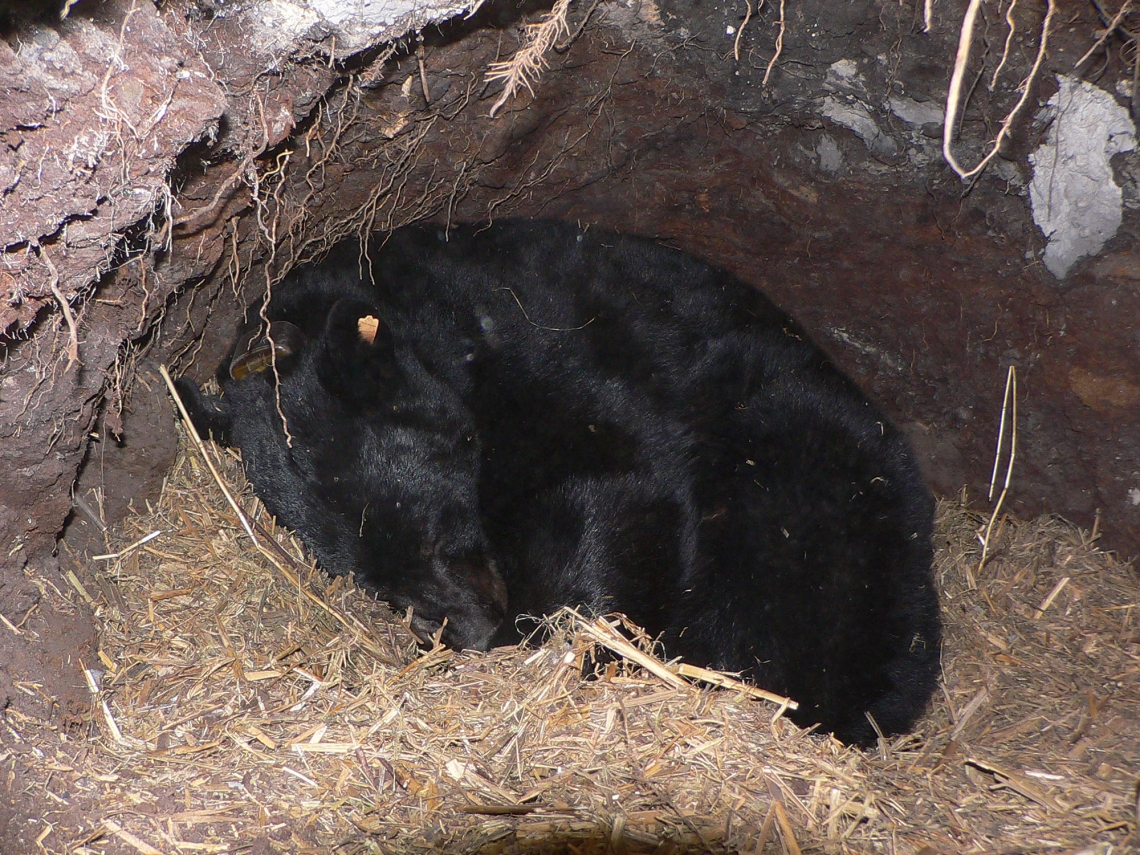
American black bear_U americanus_Minnesota_underground den typical hibernating posture_D Garshelis

American black bear_U americanus_Minnesota_excavated bear den, frost around hole from warmer air inside den_D Garshelis
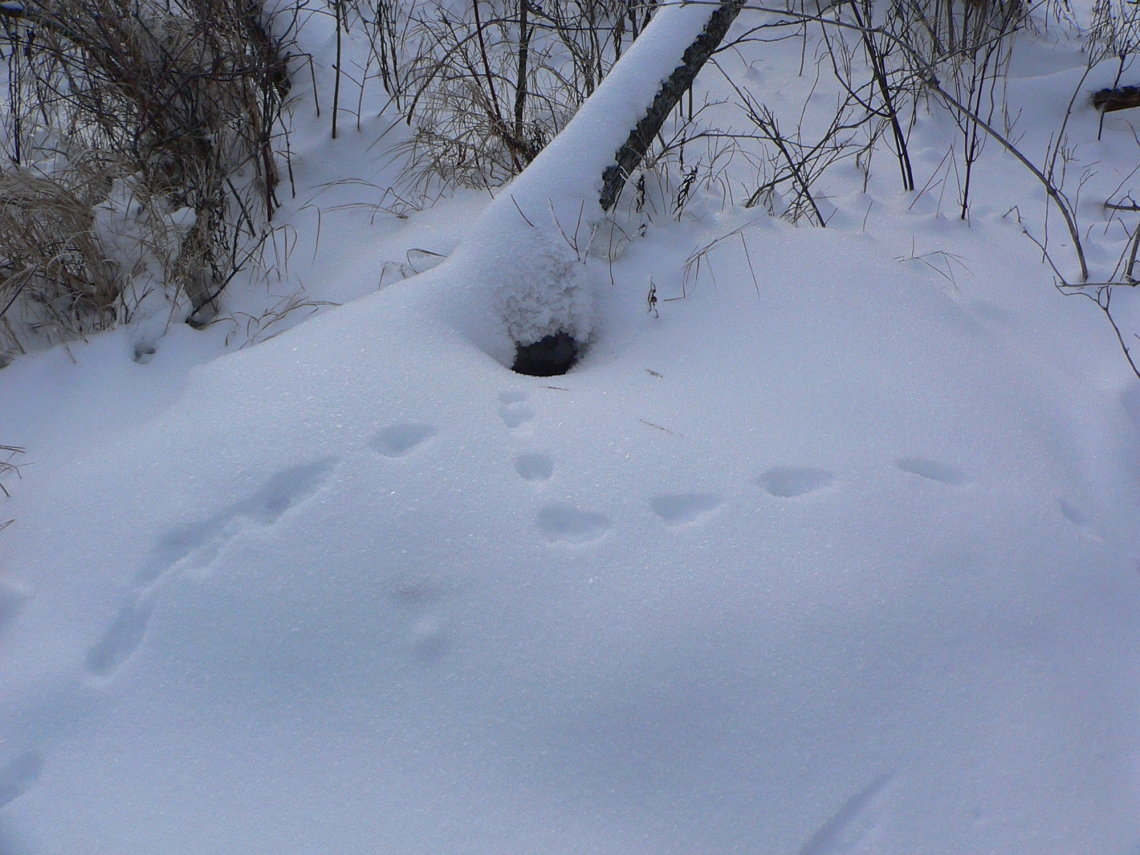
American black bear_U americanus_Minnesota_excavated bear den under tilted tree animal tracks visiting_D Garshelis

American black bear_U americanus_Minnesota_hollow silver maple tree used by denning bear_D Garshelis
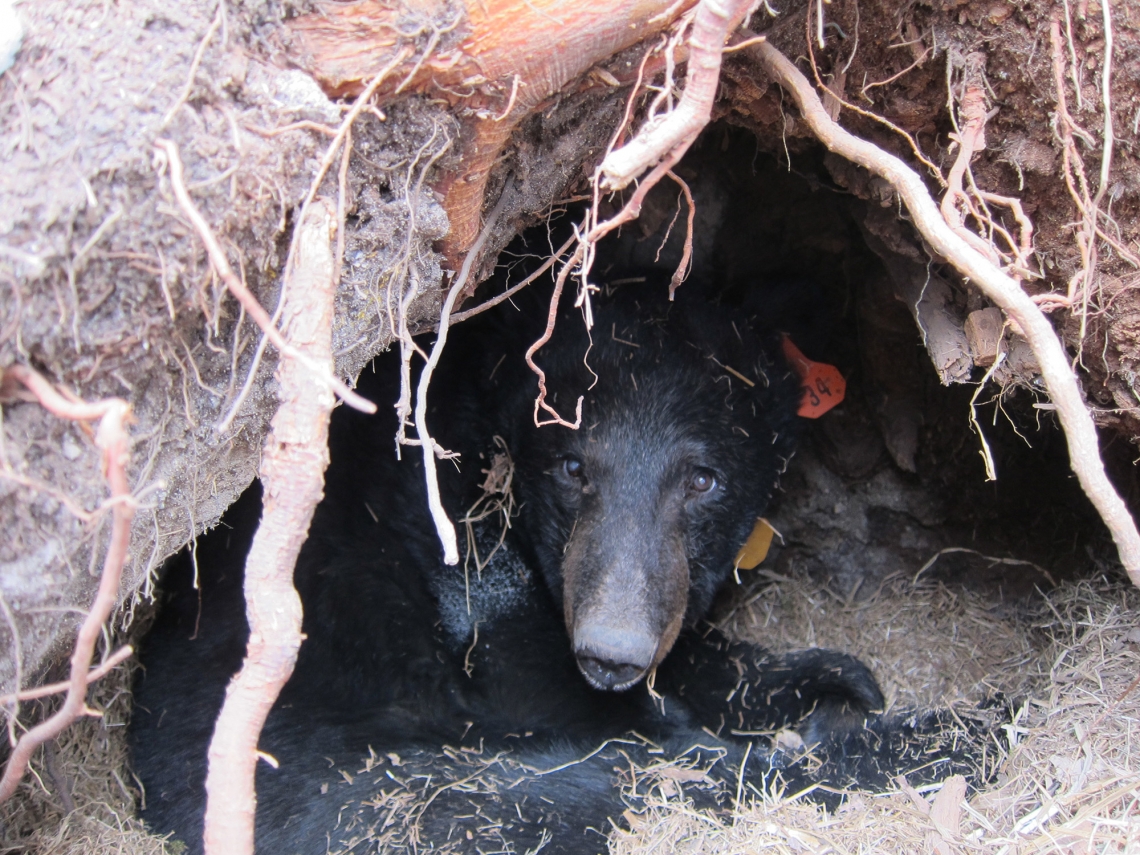
American black bear_U americanus_Minnesota_bear 56 oldest known wild bear who lived to age 39 in den_D Garshelis

American black bear_U americanus Minnesota_205 kg male bear in nest den_D Garshelis
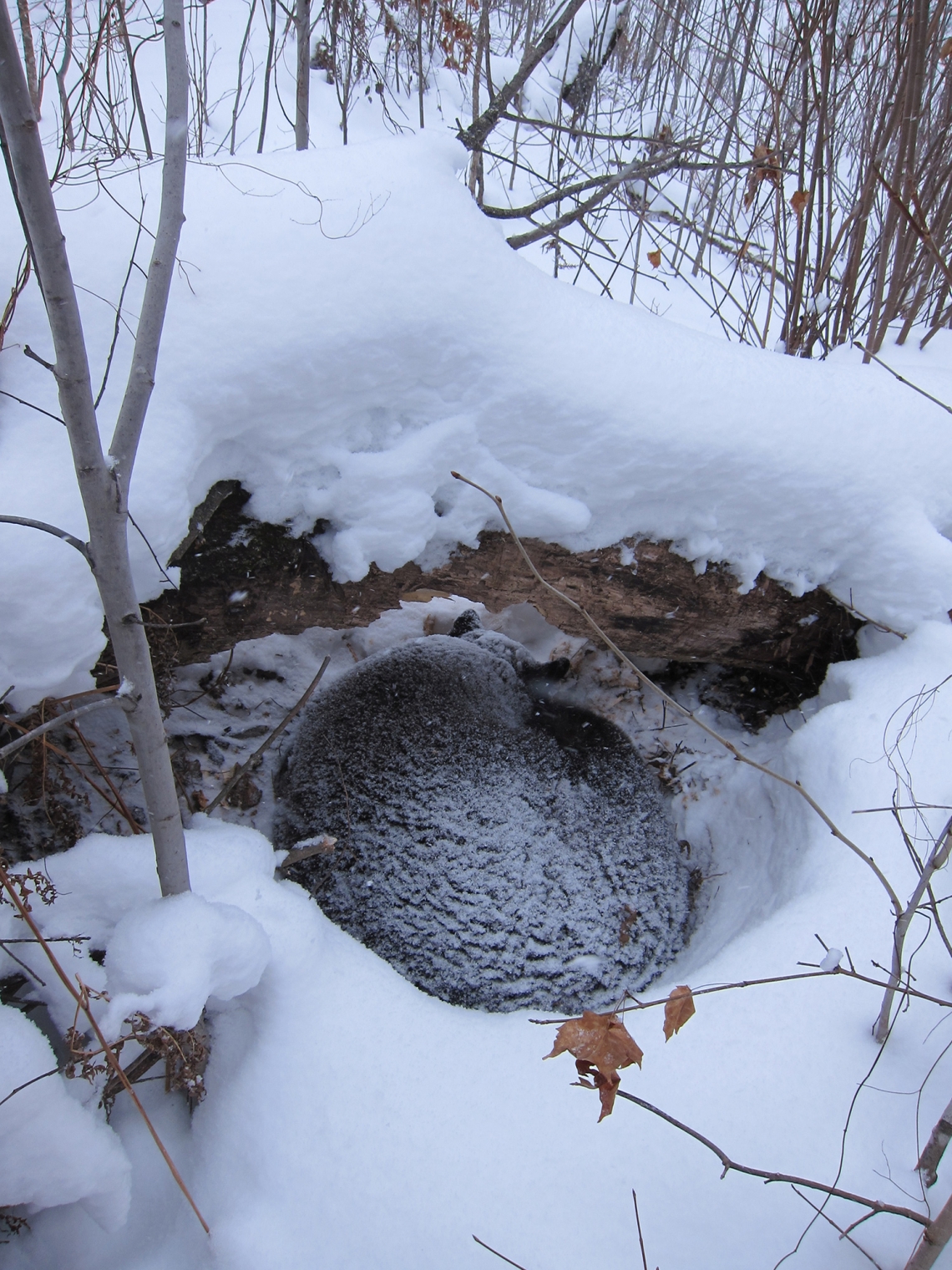
American black bear_U americanus Minnesota_pregnant female in nest den_D Garshelis

American black bear_U americanus Minnesota_researcher heading to examine bear den_D Garshelis
Reproductive cycle: Mating typically occurs in May–July, but this period may be extended in southern latitudes. Females breed with multiple males, and males mate with multiple females so littermates could have different fathers, and dominant males may father more than one litter in a year. Implantation of the fertilized egg is delayed until November or early December, and active gestation is only 2 months. Birthing occurs in January or early February while the female is hibernating; she nurses her cubs during hibernation, while consuming no food or water. Females generally produce their first litter at 3–6 years old (though this can be as late as 10 in northern populations), and every other year thereafter. In places with less food, or if there is a widespread seasonal food failure, the interval between litters may extend to 3 years (i.e., females must attain sufficient body mass by fall for successful implantation and development of embryos). Cubs stay with their mother for 16–17 months, denning with their mother as yearlings (1-year-olds); in rare cases they stay an extra year. Average litter size is ~2.5 cubs in the eastern and midwestern portions of the range (ranging up to 5 or rarely 6 cubs [females have 6 nipples]) versus 2 cubs (averaging less in some areas) in western and northern parts of the range. Reproductive rate in this species is highest among the bears. They can produce cubs until their mid-20s, and can live to their late 30s in the wild (the oldest known wild bear was 39 years old). If a female lived to reproductive senescence, she could produce 30 or more cubs in her lifetime. Cub sex ratio at birth is 50:50, or slightly male-biased.
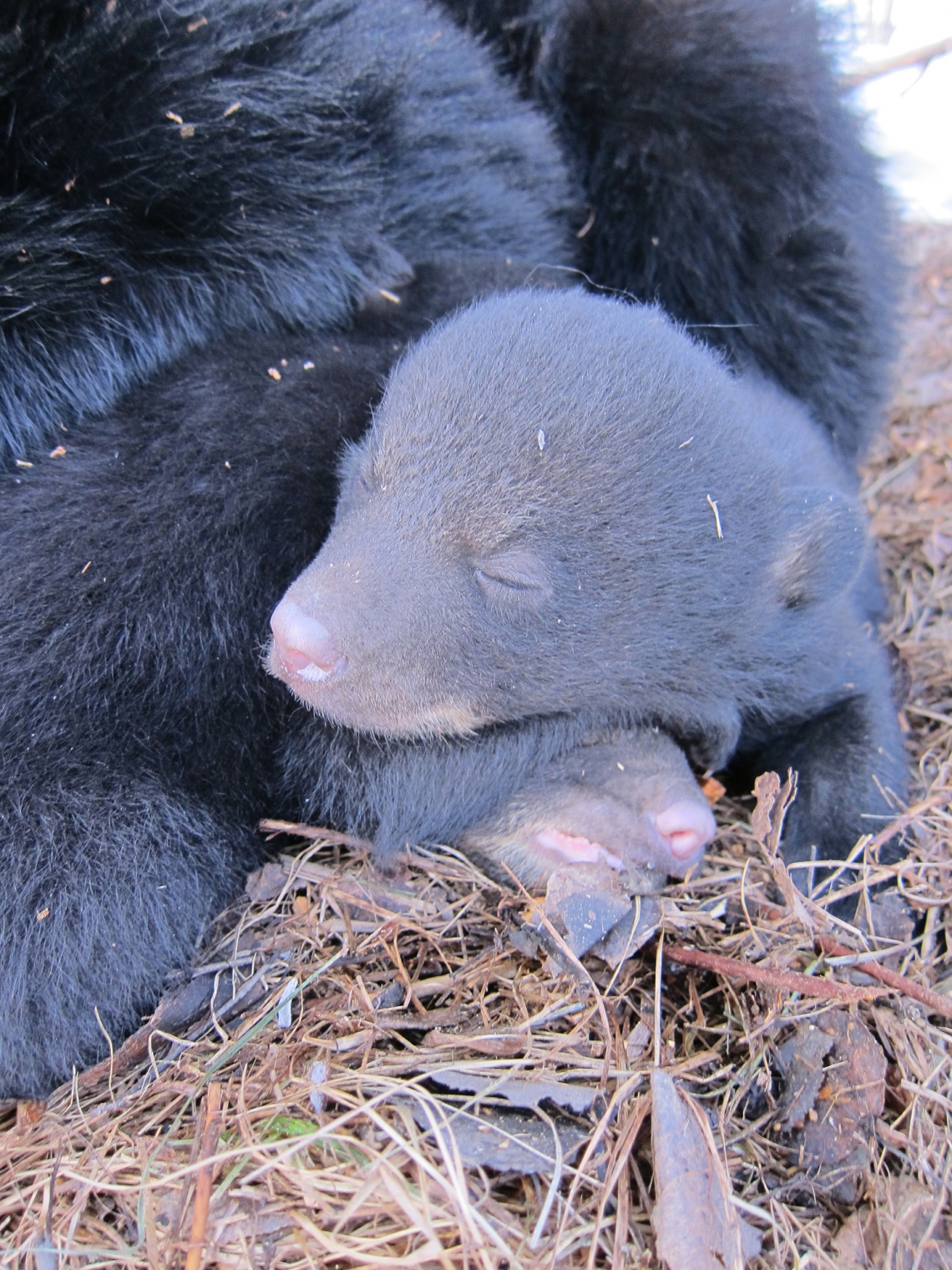
American black bear_U americanus_Minnesota_young cubs in den before opening eyes_D Garshelis

American black bear_U americanus_Minnesota_suckling cub_D Garshelis
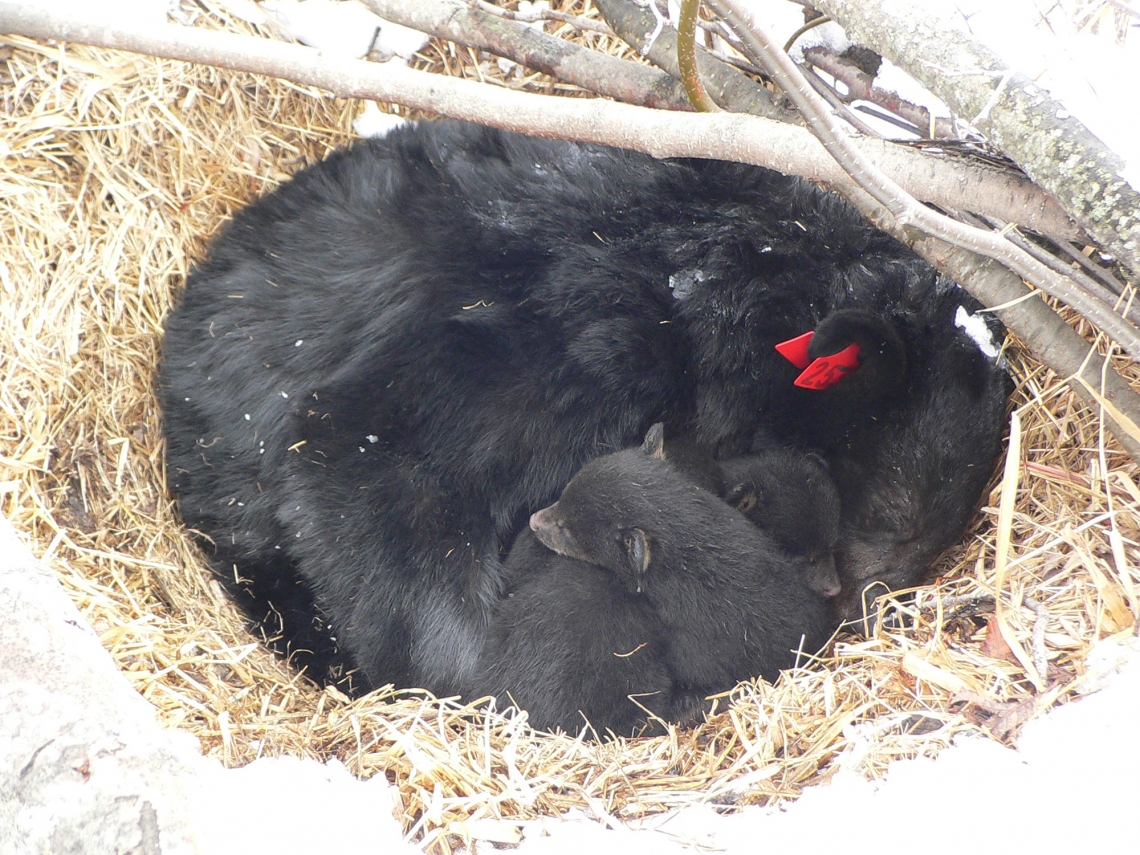
American black bear_U americanus_Minnesota_mother with cubs born in open den_D Garshelis
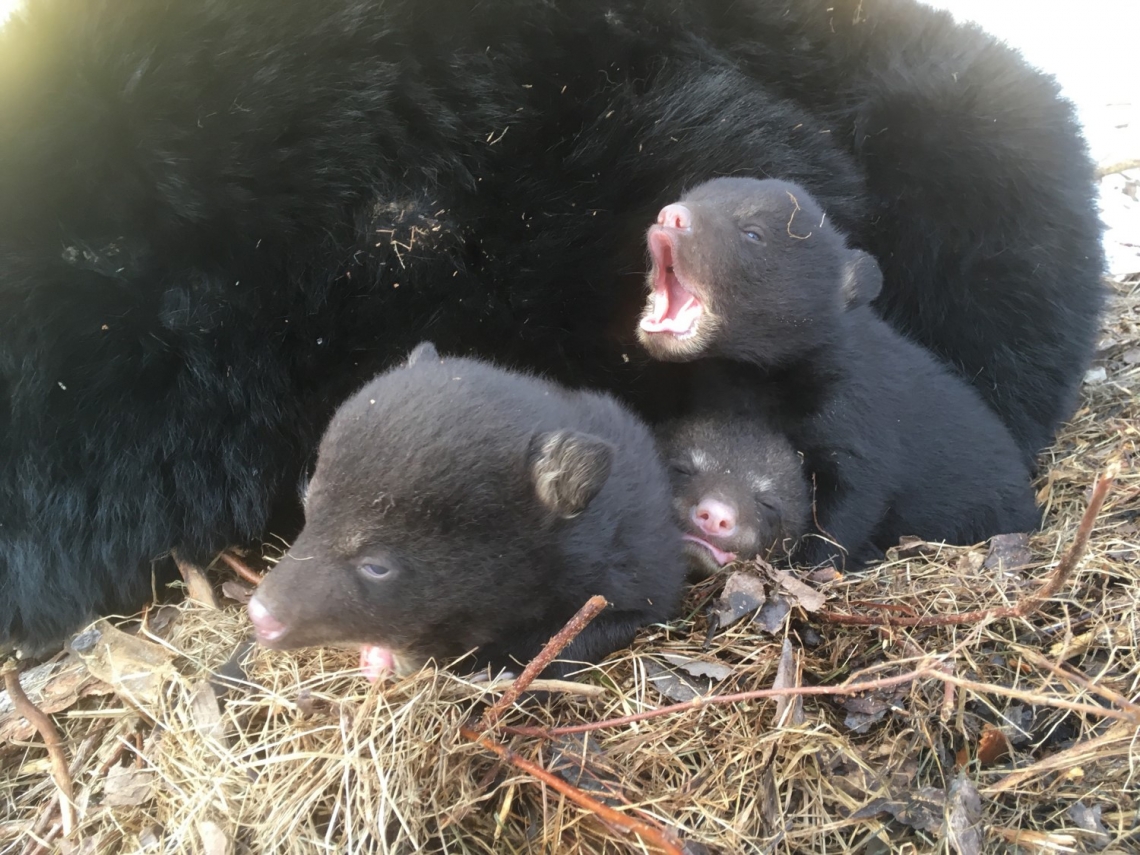
American black bear_U americanus_Minnesota_cubs in den crying about 7 weeks old_D Garshelis

American black bear_U americanus_Minnesota_7 week old cubs in den with typical blue eyes_D Garshelis
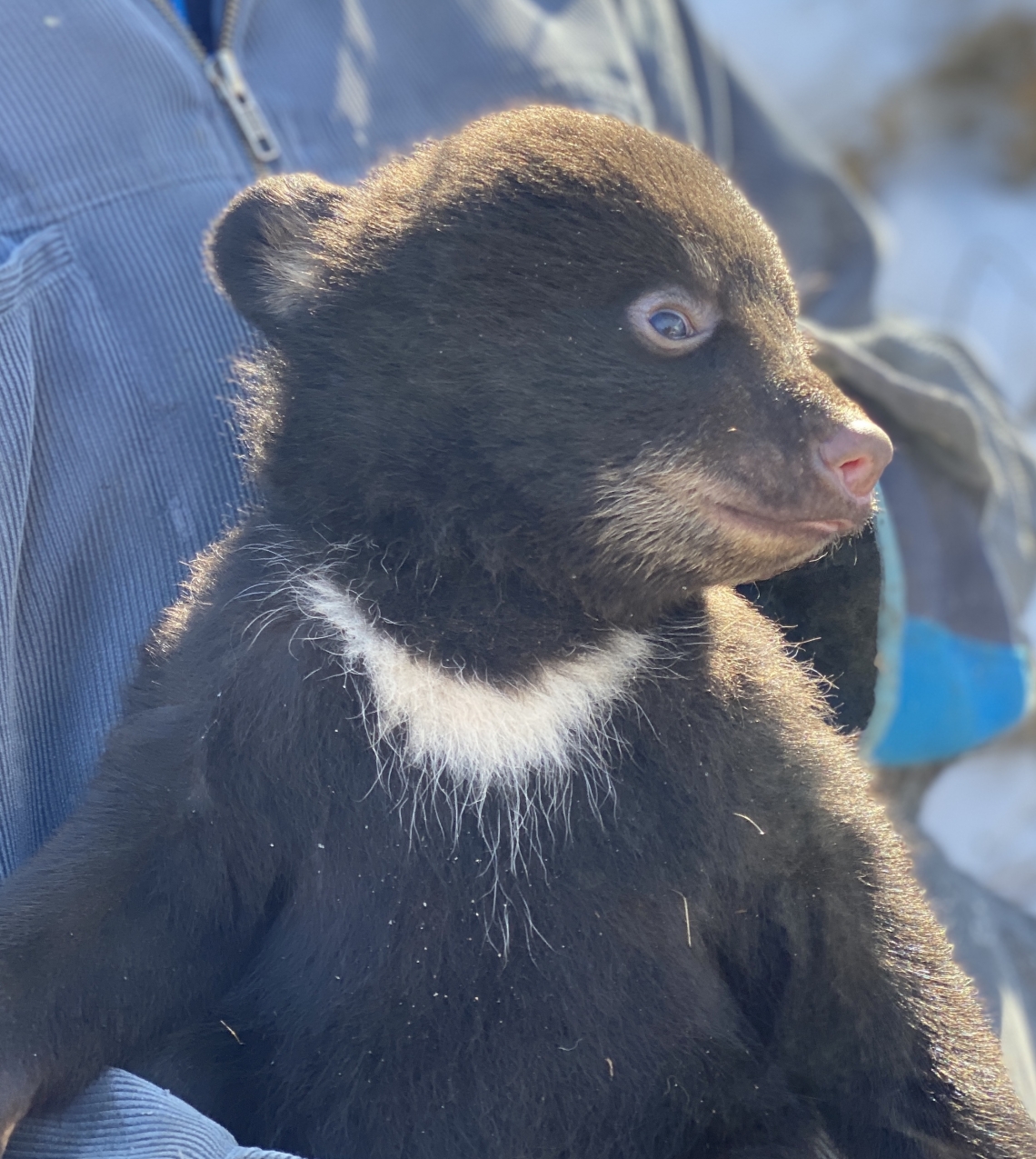
American black bear_U americanus_Minnesota_unusual large white chest blaze on cub_D Garshelis
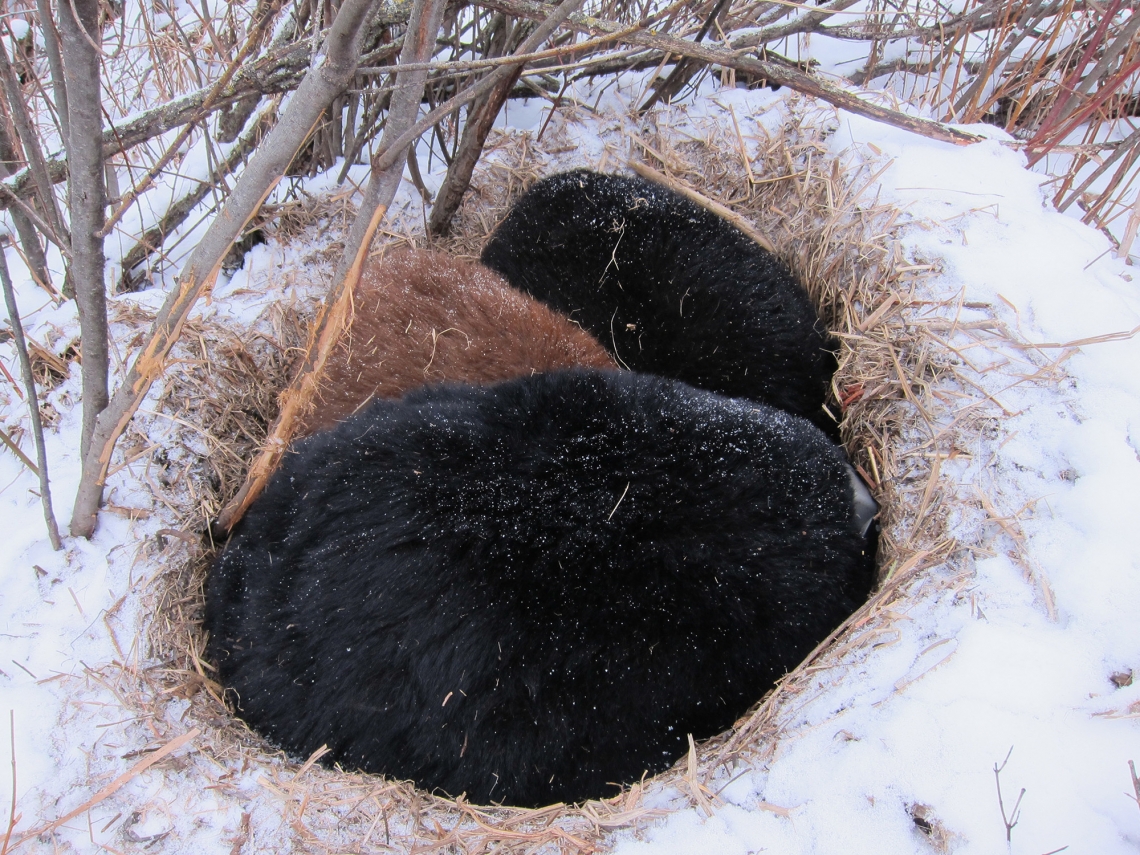
American black bear_U americanus_Minnesota_mother denning with her 2 yearlings, 1 black 1 brown_D Garshelis
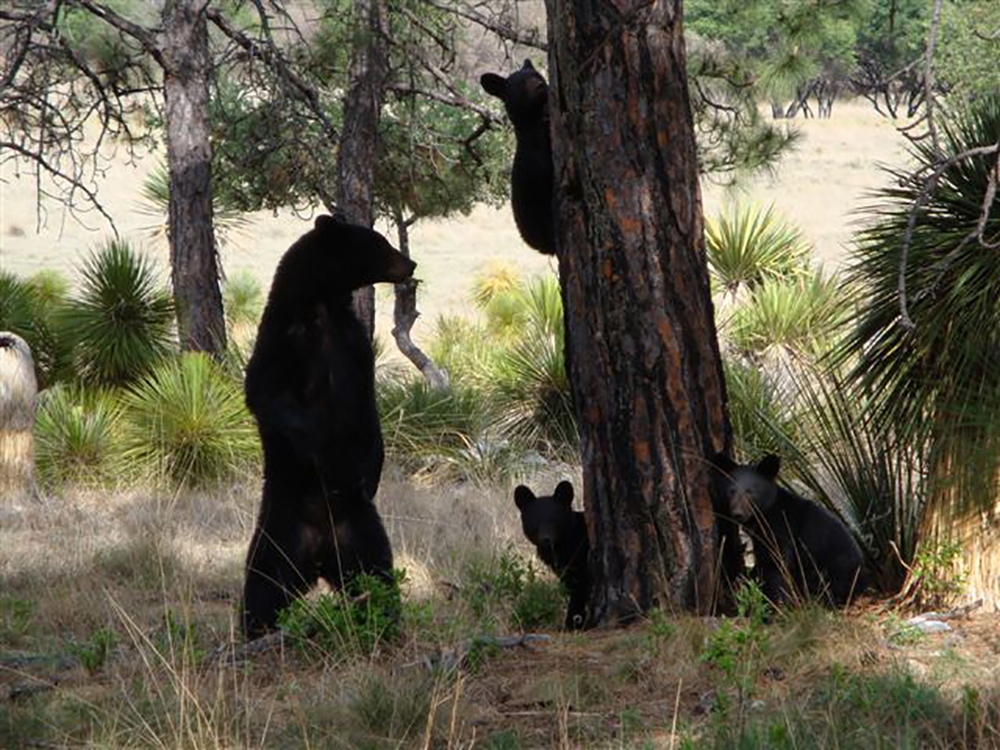
American black bear_U americanus Cohuila Mexico_mother with 3 cubs_D Doan-Crider
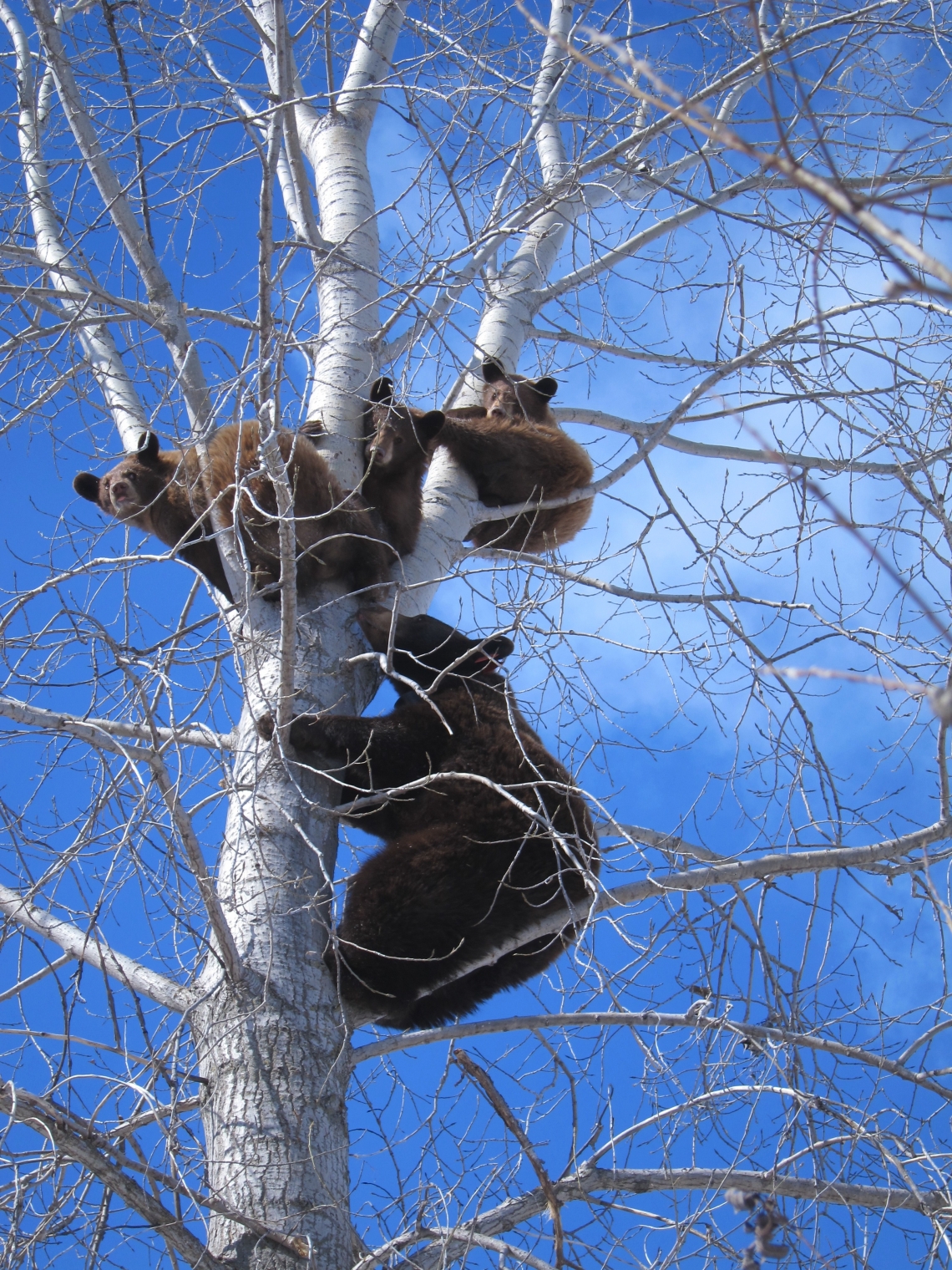
Amderican black bear_U americanus_Minnesota_mother with 3 brown-colored yearlings in tree_D Garshelis